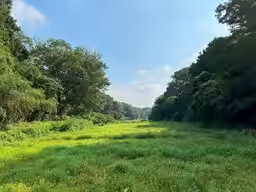

The Resilience of Abandoned Farmland: Eco-DRR's Protective Potential
The Resilience of Abandoned Farmland: Eco-DRR's Protective Potential
In recent years, the concept of Ecosystem-based Disaster Risk Reduction (Eco-DRR) has garnered attention as a crucial approach to combat the escalating natural disasters exacerbated by climate change. This innovative notion emphasizes the use of green infrastructures such as agricultural land and urban green spaces to bolster disaster preparedness. Research discusses how these ecosystems not only reduce disaster risks but also offer myriad benefits to human societies, including biodiversity preservation.
The Findings
A collaborative study by Takeshi Osawa, Associate Professor at Tokyo Metropolitan University, Takaaki Nishida, Professor at Kyoto Sangyo University, and Takashi Oka, Senior Researcher at Mitsubishi UFJ Research and Consulting, revealed significant insights into the disaster risk reduction potential of agricultural land even after it has been abandoned. Analyzing statistical data across municipalities in the Kanto region, the researchers found that both paddy fields and farmlands retain high disaster risk reduction capabilities despite signs of agricultural abandonment. This research, published on June 12 in Scientific Reports, underlines the importance of utilizing abandoned agricultural lands within the Eco-DRR framework to develop flood defense strategies.
Understanding the Context
Japan faces serious challenges from natural disasters including typhoons, heavy rains, floods, and landslides. Many traditional disaster infrastructures, such as levees and dams, are aging and unable to cope with the growing severity of these events. As the population declines, the maintenance, renewal, and expansion of these infrastructures become increasingly difficult. In this context, Eco-DRR strategies are sought as a sustainable alternative, leveraging the existing ecosystems for disaster risk reduction.
Agricultural lands account for more than 10% of Japan's land area, taking a substantial share next to forests. Traditionally intended for food production, these lands are also recognized for their secondary benefits, including disaster mitigation. Recent evaluations of these multifaceted functions have encouraged further exploration of the active integration of agricultural land into disaster risk reduction strategies.
Despite the evident benefits, Japan's agricultural sector is facing challenges—including a decline in farmers and an aging population—which have contributed to an increase in abandoned farmland. While it’s known that abandoned agricultural plots lose their primary function of food production, there has been little research into how this abandonment affects their disaster management capabilities.
The Research Methodology
To evaluate the impact of agricultural abandonment on disaster risk reduction functions, the researchers examined the relationship between abandoned farmland and the frequency of flooding events across municipalities in Saitama, Tochigi, and Gunma prefectures—none of which are adjacent to the sea. Using statistical models, they examined data from 2011 to 2019, considering variables like the area of farmland, abandonment rates, and urbanization. They found that both types of farmland—paddy and upland—contribute to flood mitigation, while urban areas tend to exacerbate flooding risks. Remarkably, the study revealed that abandonment rates did not significantly affect the disaster mitigation function of the farmlands. This suggests that even the transition from active agricultural use to abandonment still preserves vital protective capacities against floods.
Surprising Results
Counter to initial expectations, the research indicated that the abandonment of paddy fields did not significantly diminish their disaster risk reduction capacity. Researchers speculate that recent changes—such as the concrete reinforcement of dikes and irrigation channels—may help maintain water retention capabilities, even in neglected paddy fields. Ultimately, the findings underscore that, at least under current conditions, the disaster mitigation benefits of paddy and upland fields remain largely intact despite abandonment. However, this study primarily relies on government statistics and land use data, leaving the exploration of more detailed mechanisms for future research.
Implications and Future Directions
These findings emphasize the significance of preserving abandoned farmland as a component of disaster risk management. The results suggest that converting these lands for urban development or other uses might compromise their disaster mitigation benefits. Thus, recognizing the secondary advantages of agricultural land—such as disaster resilience—reinforces the necessity for safeguarding even abandoned farmland. As Japan continues to grapple with the increasing prevalence of abandoned agricultural land, solutions that incorporate these lands into a green infrastructure strategy will be essential for sustainable disaster risk reduction efforts moving forward.
In conclusion, while food production is the primary function of agricultural land, this research advocates for the inclusion of disaster mitigation capabilities in considerations for future land use policies, regardless of immediate agricultural activity. Maintaining farmland as a form of green infrastructure is not only vital for ensuring sustainability but is increasingly recognized as an essential part of the public safety landscape amidst growing environmental threats.


Topics Environment)










【About Using Articles】
You can freely use the title and article content by linking to the page where the article is posted.
※ Images cannot be used.
【About Links】
Links are free to use.